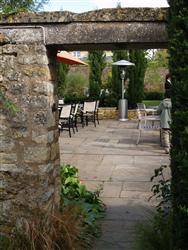
Add To Existing Landscape Design Knowledge
Basic landscape design is concerned with how to do things like how hard landscape features are made and selecting plants to suit the location. When you have mastered that it is logical to want to expand on that knowledge and learn more about different groups of plants and how to use them, how to overcome problem areas and greater detail of hard landscape construction options.
Discover how to blend hard and soft landscape features
Take this course to discover a variety of methods for expanding on elementary landscape design knowledge and has a greater focus on plants. Learn about a range of hard landscape materials and their impact on design, as well as a broad array of plants from annuals through to trees and where to use them. Find out how plants can be selected for different conditions and the impact of microclimates on design.